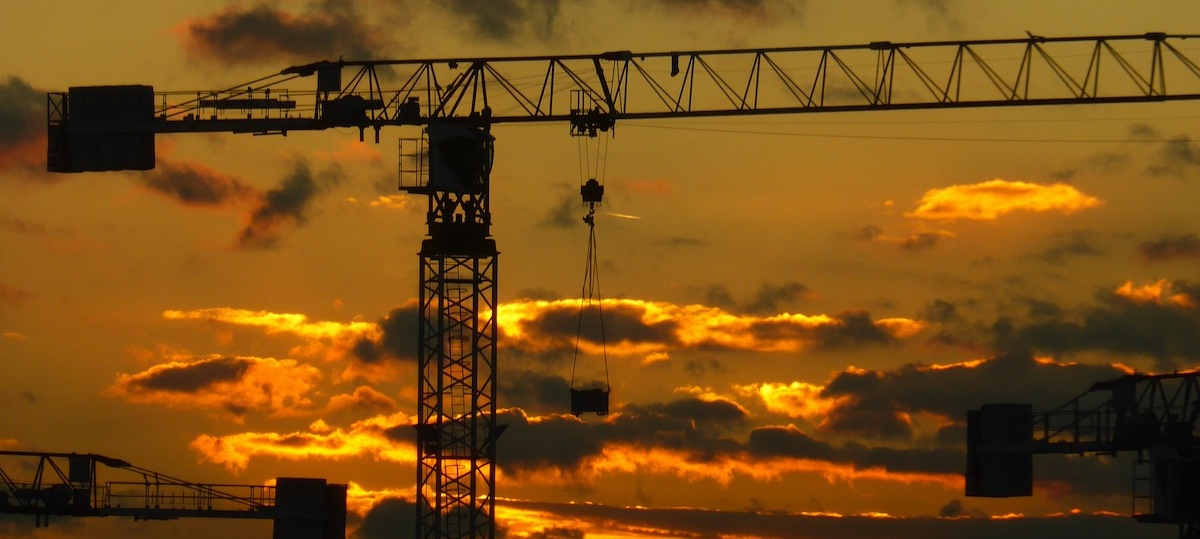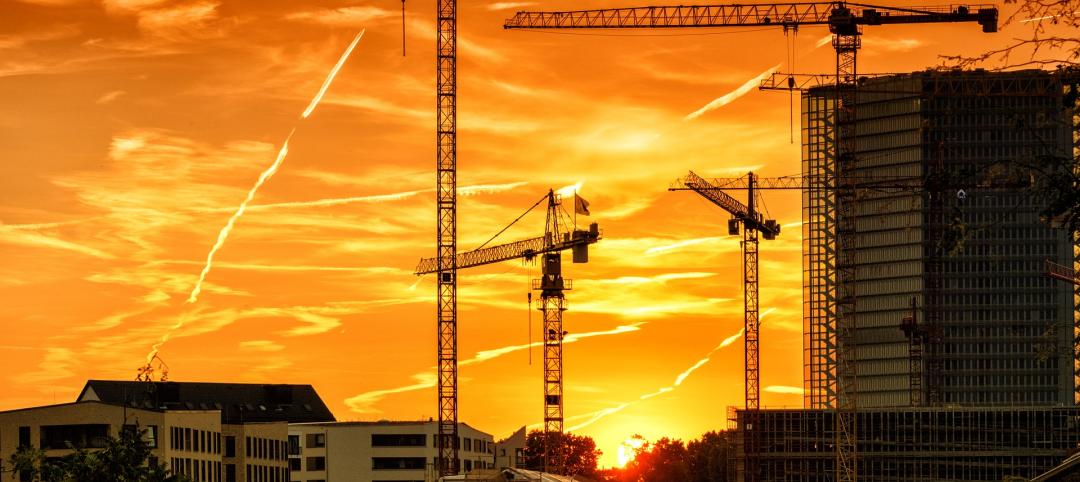Today's Census Bureau release regarding nonresidential construction spending did not just offer good news about April, it also supplied upwardly revised spending data for both February and March.
Nonresidential spending expanded 3.2% on a monthly basis in April, and spending totaled $646.7 billion on a seasonally adjusted, annualized basis, according to the government's initial estimate. Nonresidential construction is up by a solid 8.8% over the past year, consistent with ABC's forecast of high single-digit growth.
The Census Bureau also revised March's nonresidential spending figure from $611.8 billion to $626.7 billion, and February's figure from $613.1 billion to $618.4 billion. Initial estimates suggested that nonresidential construction was sagging during the early months of the year; however, the new data indicate spending has expanded during each of the previous three months.
"There is a considerable amount of financial capital available to move construction projects forward and low interest rates certainly help. While the availability of substantial financial capital may eventually produce over-built private construction markets, for now the expectation is that progress will continue." —Anirban Basu, ABC Chief Economist
"The upbeat assessment of nonresidential construction in April has been rendered more meaningful by the upward revisions for prior months," said ABC Chief Economist Anirban Basu. "The presumption had been that nonresidential spending construction data would improve as we approached the summer, and the outlook ahead remains solid.
"There is a considerable amount of financial capital available to move construction projects forward and low interest rates certainly help," added Basu. "While the availability of substantial financial capital may eventually produce over-built private construction markets, for now the expectation is that progress will continue."
All but one nonresidential construction sector experienced spending increases in April:
• Manufacturing-related construction spending expanded 2.6% in April and is up a whopping 52.9% on a yearly basis.
• Office-related construction spending expanded 3.7% in April and is up 8.8% compared to the same time one year ago.
• Construction spending in the transportation category grew 1.6% on a monthly basis and has expanded 11.6% on an annual basis.
• Lodging-related construction spending was up 5.5% on a monthly basis and 17.6% on a year-over-year basis.
• Health care-related construction spending expanded 2.1% for the month and is up 2.6% compared to the same time last year.
• Spending in the water supply category expanded 0.7% from March and is up 0.8% on an annual basis.
• Public safety-related construction spending gained 2.3% on a monthly basis, but is down 5.6% on a year-over-year basis.
• Commercial construction spending expanded 2.7% in April and is up 17.5% on a year-over-year basis.
• Religious spending gained 3.3% for the month, but is down 7.8% compared to the same time last year.
• Sewage and waste disposal-related construction spending gained 0.5% for the month and has grown 14.9% on a 12-month basis.
• Power-related construction spending grew 2.5% for the month, but is 11.3% lower than the same time one year ago.
• Highway and street-related construction spending expanded 8.5% in April and is up 4.8% compared to the same time last year.<
• Conservation and development-related construction spending grew 3.7% for the month and is up 17.2% on a yearly basis.
• Amusement and recreation-related construction spending improved 2.5% on a monthly basis and is up 23.3% from the same time last year.
• Education-related construction spending gained 3.2% for the month and is up 0.4% on a year-over-year basis.
Spending declined in only one nonresidential construction subsector in April:
• Communication-related construction spending fell 5.9% for the month and is down 5.5% for the year.
To view the previous spending report, click here.
Related Stories
Codes and Standards | Jul 8, 2024
New York State building code update would ban fossil fuels in new buildings
New York’s Building Code Council is set to include the All-Electric Buildings Act in its 2025 code update. The Act would ban natural gas and other fossil fuels in new buildings.
AEC Tech Innovation | Jul 4, 2024
Caution competes with inevitability at conference exploring artificial intelligence for design and construction
Hosted by PSMJ, AEC Innovate in Boston found an AEC industry anxiously at the threshold of change.
Building Team | Jul 3, 2024
So you want to get published: What’s next?
In the AEC industry, securing media attention is no longer a niche endeavor but an essential component of a holistic marketing strategy.
MFPRO+ New Projects | Jul 2, 2024
Miami residential condo tower provides a deeded office unit for every buyer
A new Miami residential condo office tower sweetens the deal for buyers by providing an individual, deeded and furnished office with each condo unit purchased. One Twenty Brickell Residences, a 34-story, 240-unit tower, also offers more than 60,000 sf of exclusive residential amenities.
Student Housing | Jul 1, 2024
Two-tower luxury senior living community features wellness and biophilic elements
A new, two-building, 27-story senior living community in Tysons, Va., emphasizes wellness and biophilic design elements. The Mather, a luxury community for adults aged 62 and older, is situated on a small site surrounded by high-rises.
Contractors | Jul 1, 2024
Nonresidential construction spending slips 0.1% in May but remains elevated
National nonresidential construction spending decreased 0.1% in May, according to an Associated Builders and Contractors analysis of data published today by the U.S. Census Bureau. On a seasonally adjusted annualized basis, nonresidential spending totaled $1.21 trillion.
Contractors | Jul 1, 2024
New emergency cooling vest can prevent heat-related deaths on construction sites
A new emergency cooling vest is designed to prevent heat-related deaths without requiring electricity or refrigeration. The lightweight ColdVest is the world’s first portable, Class 1 FDA emergency cooling device that can rapidly lower core body temperatures up to 5 degrees in under 3 minutes.
Smart Buildings | Jul 1, 2024
GSA to invest $80 million on smart building technologies at federal properties
The U.S. General Services Administration (GSA) will invest $80 million from the Inflation Reduction Act (IRA) into smart building technologies within 560 federal buildings. GSA intends to enhance operations through granular controls, expand available reporting with more advanced metering sources, and optimize the operator experience.
Sustainability | Jul 1, 2024
Amazon, JPMorgan Chase among companies collaborating with ILFI to advance carbon verification
Four companies (Amazon, JPMorgan Chase, JLL, and Prologis) are working with the International Living Future Institute to support development of new versions of Zero Carbon Certification.
K-12 Schools | Jul 1, 2024
New guidelines for securing schools and community spaces released by the Door Security and Safety Foundation
The Door Security and Safety Foundation (DSSF), in collaboration with Door and Hardware Institute (DHI), recently released of “Are Your Door Openings Secure?.” The document provides guidelines to equip school administrators, building management personnel, and community leaders with a clear roadmap to create a secure and safe environment.

















